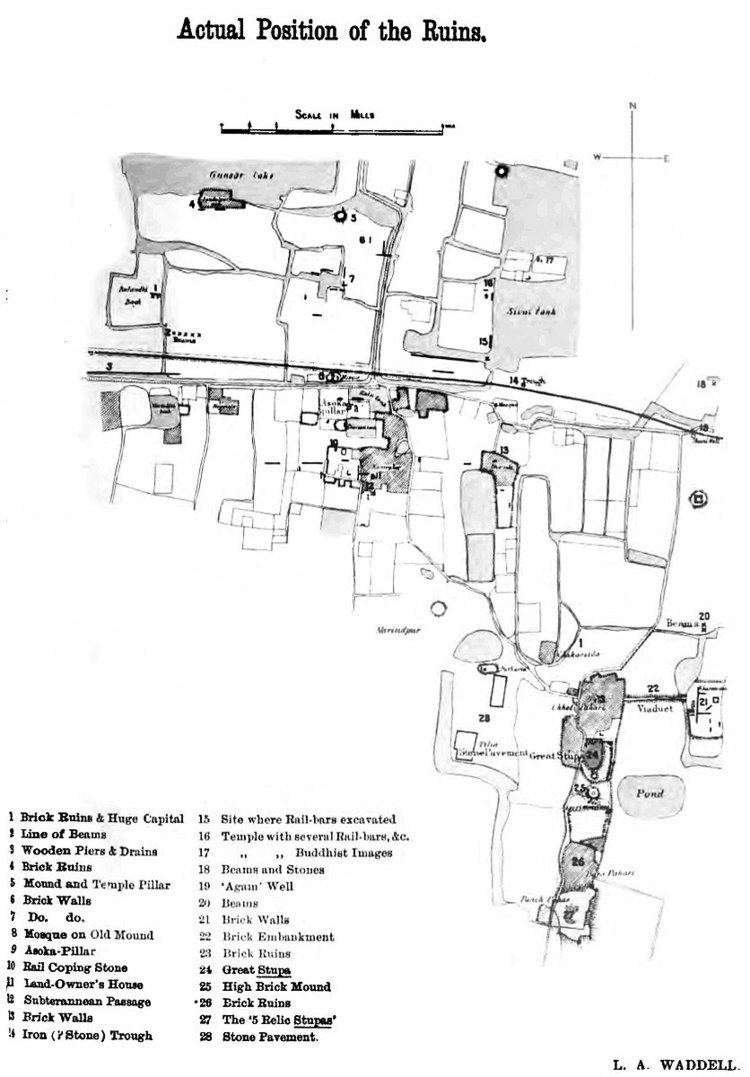Type Settlement | ||
 | ||
Bulandi Bagh is an area of the archaeological site of Pataliputra (north of railway station of the modern city of Patna). It is mainly known for the discovery of the monumental Pataliputra capital, unearthed in 1895 by L.A. Waddell, as well as the excavation of wooden palissades thought to have formed the protective walls of ancient Pataliputra. Bulandhi Bagh is thougt to have been part of the Maurya dynasty royal palace in Pataliputra.
Other excavations in 1912-1913 took place in the area of Bulandi Bagh under American archaeologist David Brainard Spooner, working for the British Archaeological Survey of India. Spooner devoted most of his resources to the site of Kumrahar to the south, but in Bulandi Bagh, he found a wooden palissade, punch-marked coins and terracotta figures (head of smiling boy and dancing figure), and various beads and seals.
In 1926-1927, J .A. Page and M. Ghosh for the Archaeological Survey of India excavated the area again leading to the discovery of large wooden palissades (137 meters were excavated), also thought to be of the Mauryan period. It is thought that it is the palissade seen by Megasthenes during his visit to Pataliputra. Strabo in his Geographia, quoting Megasthenes:
"At the confluence of the Ganges and of another river is situated Palibothra, in length 80, and in breadth 15 stadia. It is in the shape of a parallelogram, surrounded by a wooden wall pierced with openings through which arrows may be discharged. In front is a ditch, which serves the purpose of defence and of a sewer for the city." Strabo, "Geographia"
According to Arrian, also quoting Megasthenes:
"Megasthenes says that on one side where it is longest this city extends ten miles in length, and that its breadth is one and threequarters miles; that the city has been surrounded with a ditch in breadth 600 feet, and in depth 45 feet; and that its wall has 570 towers and 64 gates." Arrian, "The Indica"
